Search Results
Fine Jewelry University Articles matching: “Letter B”
Showing only FJU Article results. Click here to show all results.
Fine Jewelry University (Show All FJU Articles)
-

Gem in the Spotlight: Alexandrite
Emerald by day, ruby by night, more expensive than diamond and more illustrious than sapphire, emerald, or even ruby, …? Gemology of Alexandrite Alexandrite is the extremely rare, color-change variety of a gem species called Chrysoberyl. It appears bluish-green in daylight, fluorescent light, and some LED light. Under incandescent light, candle, and …-red. This is because of how the trace element chromium interacts with alexandrite’s crystal structure. It absorbs most wavelengths of light very well, only transmitting green and red light. This means that depending on the light …
-
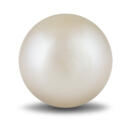
Gem in the Spotlight: Pearl
Pearls have captured the imagination and adoration of people from diverse backgrounds throughout history. They are both simple and infinitely complex. Let’s explore the science, history, and … of a mollusk and irritates the soft mantle tissue within. In response to the irritant, the mollusk secretes a substance called nacre to coat the object and protect itself. Over time, layer upon layer of nacre is deposited around the … can take years, even decades, to form, and are found only in a few select locations around the world. The process by which they are created is completely unpredictable, and as a result, natural pearls come in a wide range of shapes, …
-
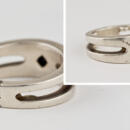
Jewelry Solder: What You Should Know
…had a ring sized, a chain repaired, or your wedding set joined together, you have very likely seen solder in action. But, what is solder and how is it different than the rest of the metal that makes up your jewelry? What is Solder? To …should know that the metals that make up our jewelry are actually a mix of multiple different metals in different combinations called alloys. For the sake of simplicity, we will focus our discussion on gold jewelry, but the same …
-
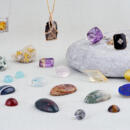
Gem in the Spotlight: Quartz
What is common and yet rare? What is well known but surprising? What is affordably priced sometimes and sometimes unattainably expensive? If you answered quartz to … title and knew). Quartz is one of the most common minerals on earth. Many quartz varieties are cut into gemstones, but some varieties are very rare. Some are ordinary like rock quartz, others are exotic like Drusy Quartz. Some quartz …is that quartz comes in 3 main forms: macrocrystalline, microcrystalline and cryptocrystalline. Within each of these broad categories, the different colors of the gemstone are given different names. Below is a quick list to help you …
-
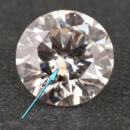
What Are Lab Grown Diamonds?
In the simplest terms, lab grown diamonds are diamonds that have been made by people instead of mined out of the earth. If it’s so simple, you …’s an entire article below this sentence. The complexity arises from the fact that lots of different terms have been used to describe lab grown diamonds and their cousins, and not everyone uses these terms in the same way. So, let’s …. Synthetic can mean artificial or even fake. Synthetic can also mean man-made, copied, unreal, or even imitation. But, in this context, what do we mean when we say “synthetic diamond”? In the gemological world, synthetic is a highly …
-

Jewelry Repair FAQ
… stone match the old one? We get this question all the time. People want their jewelry to look just the way it did before a gemstone fell out; who wouldn’t? That’s why we have literally 100s of carats of loose diamonds, sapphires, …. Of course, some gems are more difficult to match than others. Pearls, opals, and other gems with patterns in them (Blood Stone, Pietersite, etc.) are notoriously difficult to match. With these difficult to match gems, we search …
-
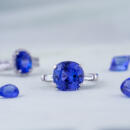
Gem in the Spotlight: Tanzanite
Beauty and rarity are two wonderful traits in a gemstone. Tanzanite has them both. In fact, it is estimated that … diamond. But, what makes Tanzanite so popular is its color. Tanzanite’s gorgeous color is a captivating mix of blue and purple. The deep hues of violet, indigo, and blue come together in an unrivaled blend only found in tanzanite. Yet… commonly known gems like rubies, sapphires, and emeralds. Gemology of Tanzanite Gemologists refer to this gem as blue zoisite. The vast majority (current estimates are around 95%) of tanzanite is heat treated to help bring out the …
-
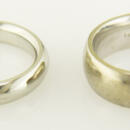
The Difference Between White Gold and Platinum
The first difference between white gold and platinum is the most basic and is the foundation of all the other differences. White gold and … gold is an alloy of gold and some white metals such as silver, nickel or palladium. The white color is achieved by a careful choice of the alloying metals, which bleach the deep yellow of pure gold. The amount of alloy mixed with gold… is a 14-karat gold wedding ring. It is 14/24, which equals 58.3% gold and 41.7% alloy. The white color is achieved by a careful choice of the alloying metals, which bleach the yellow of pure gold. Platinum is a naturally white metal. …
-

The Magic of Polarized Light
We use polarized light on a daily basis when we put on our sunglasses, turn on our TV, or sit down at our computer. But, what is polarized light exactly…you why. What Is Polarized Light? Light from almost any light source travels in many different directions, and the vibrations around each ray of light are random. This is called unpolarized light. In the gemological world, this would … light or a daylight equivalent fluorescent light source). Polarized light, on the other hand, has all of the vibrations and rays going in the same direction. One of the most common occurrences of this in nature is sunlight reflecting …